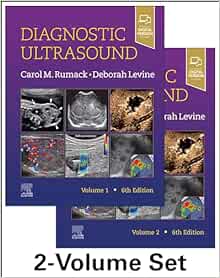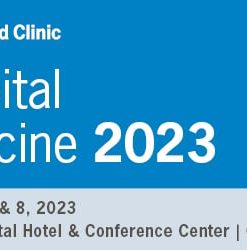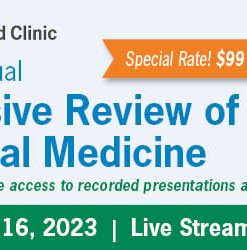The Benefits of Video Medical: How Telemedicine Can Improve Your Health Care
Discover the Benefits of Video Medical
Video medical is a revolutionary technology that allows healthcare providers to connect with patients remotely. With video medical, you can access medical care from anywhere in the world, without having to leave your home or office. Video medical offers a variety of benefits, including improved patient engagement, increased efficiency, and cost savings. Plus, it’s easy to use and secure. If you’re looking for a way to improve your healthcare experience, consider trying video medical. To learn more about how video medical can help you, visit this link. With video medical, you can get the care you need, when you need it.
VIDEO MEDICAL
VIDEO MEDICAL
VIDEO MEDICAL
VIDEO MEDICAL
VIDEO MEDICAL
VIDEO MEDICAL
VIDEO MEDICAL
VIDEO MEDICAL
VIDEO MEDICAL
VIDEO MEDICAL
VIDEO MEDICAL
VIDEO MEDICAL
VIDEO MEDICAL
VIDEO MEDICAL
VIDEO MEDICAL
Introduction
Telemedicine is revolutionizing the way we receive healthcare. Video medical, or telemedicine, is a convenient and cost-effective way to access medical care from the comfort of your own home. With video medical, you can connect with a doctor or specialist in real-time via video chat, allowing for quick diagnosis and treatment. This article will discuss the many benefits of video medical and how it can improve your health care. From improved access to specialists to increased convenience, telemedicine is transforming the way we receive medical care.
The Advantages of Telemedicine: How Video Medical Can Enhance Your Health Care
Telemedicine is a revolutionary technology that has revolutionized the way healthcare is delivered. It is a form of medical care that uses video conferencing, telephone calls, and other forms of communication to provide medical advice and services to patients who are not able to physically visit a doctor’s office or hospital. Telemedicine has many advantages over traditional in-person visits, including convenience, cost savings, and improved access to care.
One of the primary advantages of telemedicine is convenience. With telemedicine, patients can receive medical advice and treatment from the comfort of their own home. This eliminates the need for long drives to the doctor’s office or hospital, which can be especially beneficial for those with limited mobility or transportation options. Additionally, telemedicine appointments can often be scheduled quickly and easily, allowing patients to get the care they need without having to wait for an appointment.
Another advantage of telemedicine is cost savings. By eliminating the need for travel and in-person visits, telemedicine can help reduce overall healthcare costs. Additionally, telemedicine can help reduce the amount of time doctors spend on administrative tasks, such as paperwork and scheduling, freeing up more time for patient care.
Finally, telemedicine can improve access to care. By providing medical advice and services remotely, telemedicine can help bridge the gap between rural and urban areas, allowing patients in remote locations to receive the same quality of care as those in more populated areas. Additionally, telemedicine can help reduce wait times for appointments, making it easier for patients to get the care they need when they need it.
Overall, telemedicine is a powerful tool that can enhance the delivery of healthcare. By providing convenience, cost savings, and improved access to care, telemedicine can help ensure that all patients receive the quality of care they deserve.
Exploring the Benefits of Video Medical: How Telemedicine Can Improve Access to Quality Care
Telemedicine, or the use of video technology to provide medical care remotely, is becoming increasingly popular as a way to improve access to quality healthcare. By allowing patients to connect with their doctors from the comfort of their own homes, telemedicine can help reduce wait times and make it easier for people to get the care they need.
Video medical technology has been used in various forms since the 1950s, but recent advances in technology have made it more accessible and affordable than ever before. With the help of high-speed internet connections, video conferencing software, and mobile devices, telemedicine can now be used to diagnose and treat a wide range of conditions.
One of the biggest benefits of telemedicine is that it can help reduce wait times for appointments. By eliminating the need to travel to a doctor’s office, patients can get the care they need faster. This can be especially helpful for those who live in rural areas or who have difficulty getting to a doctor’s office due to mobility issues.
Another benefit of telemedicine is that it can help reduce costs associated with healthcare. By eliminating the need for in-person visits, telemedicine can help reduce overhead costs for both patients and providers. Additionally, telemedicine can help reduce the amount of time spent on administrative tasks, such as scheduling appointments and filling out paperwork.
Finally, telemedicine can help improve access to quality care. By providing patients with the ability to connect with their doctors from anywhere, telemedicine can help ensure that everyone has access to the care they need. This can be especially beneficial for those who may not have access to traditional healthcare services due to financial or geographic constraints.
Overall, telemedicine can be an effective way to improve access to quality care. By reducing wait times, costs, and administrative tasks, telemedicine can help ensure that everyone has access to the care they need. Additionally, by providing patients with the ability to connect with their doctors from anywhere, telemedicine can help ensure that everyone has access to quality care regardless of their location or financial situation.
Understanding the Impact of Telemedicine on Patient Outcomes
Telemedicine is a rapidly growing field of healthcare that has the potential to revolutionize the way patients receive care. Telemedicine is the use of technology to provide medical services remotely, allowing patients to access care from anywhere in the world. It has been used for decades to provide remote consultations and diagnoses, but its use has grown exponentially in recent years due to advances in technology and the increasing availability of high-speed internet connections.
The impact of telemedicine on patient outcomes is significant. Studies have shown that telemedicine can improve access to care, reduce wait times, and increase patient satisfaction. In addition, telemedicine can help reduce costs associated with travel and missed work days, as well as reduce the risk of exposure to contagious diseases. Furthermore, telemedicine can provide more timely diagnosis and treatment, leading to improved health outcomes.
Telemedicine also has the potential to improve communication between patients and providers. By providing real-time access to medical information, telemedicine can facilitate better communication between patients and their healthcare providers. This can lead to improved understanding of medical conditions and treatments, which can ultimately lead to better patient outcomes.
Finally, telemedicine can help bridge the gap between rural and urban areas. By providing access to care in remote locations, telemedicine can help ensure that all patients have access to quality healthcare regardless of where they live. This can be especially beneficial for those living in rural areas who may not have access to specialized care or who may have difficulty traveling to see a provider.
Overall, telemedicine has the potential to significantly improve patient outcomes by improving access to care, reducing wait times, and improving communication between patients and providers. As technology continues to advance, telemedicine will become an increasingly important part of healthcare delivery, and its impact on patient outcomes will continue to grow.
Examining the Cost Savings of Video Medical: How Telemedicine Can Reduce Healthcare Costs
Telemedicine, or the use of video technology to provide medical care remotely, is becoming increasingly popular as a way to reduce healthcare costs. By eliminating the need for in-person visits, telemedicine can help reduce the cost of providing medical care and make it more accessible to those who may not be able to afford traditional healthcare services.
Video medical, or telemedicine, is a form of remote healthcare delivery that uses video conferencing technology to connect patients with their healthcare providers. This type of technology allows patients to receive medical care from the comfort of their own home, without having to travel to a doctor’s office or hospital. Telemedicine also eliminates the need for costly in-person visits, which can be time consuming and expensive.
The cost savings associated with telemedicine are significant. Studies have shown that telemedicine can reduce healthcare costs by up to 30%. This is due to the fact that telemedicine eliminates the need for in-person visits, which can be costly and time consuming. Additionally, telemedicine can reduce the amount of time spent in waiting rooms, as well as the amount of time spent traveling to and from appointments.
In addition to reducing healthcare costs, telemedicine can also improve patient outcomes. Studies have shown that telemedicine can lead to improved patient satisfaction, better adherence to treatment plans, and improved health outcomes. This is due to the fact that telemedicine allows for more frequent communication between patients and their healthcare providers, which can lead to better understanding of treatment plans and better overall health outcomes.
Overall, telemedicine is an effective way to reduce healthcare costs while improving patient outcomes. By eliminating the need for in-person visits, telemedicine can save both time and money, while also providing patients with access to quality healthcare services. Additionally, telemedicine can lead to improved patient satisfaction and better health outcomes, making it an invaluable tool for healthcare providers.
Exploring the Role of Telemedicine in Improving Patient Satisfaction and Engagement
Telemedicine is a rapidly growing field of healthcare that has the potential to revolutionize the way patients receive care. It is a form of remote medical care that uses technology to provide medical services and advice to patients without them having to physically visit a doctor’s office or hospital. Telemedicine can be used for a variety of purposes, including diagnosis, treatment, follow-up care, and patient education.
The use of telemedicine has been shown to improve patient satisfaction and engagement in a number of ways. For one, it allows patients to access medical care from the comfort of their own home, eliminating the need to travel to a doctor’s office or hospital. This can be especially beneficial for those who have difficulty leaving their homes due to physical or mental health issues. Additionally, telemedicine can reduce wait times for appointments, as well as reduce the amount of time spent in the waiting room.
Telemedicine also provides patients with more control over their care. Patients can communicate directly with their doctor via video chat or phone call, allowing them to ask questions and get answers in real-time. This can help to ensure that they are receiving the best possible care and that their concerns are being addressed. Furthermore, telemedicine can provide patients with access to specialists who may not be available in their local area.
Finally, telemedicine can help to improve patient engagement by providing patients with access to educational materials and resources. This can help to empower patients to take an active role in their own health and wellness. By providing patients with the tools and information they need to make informed decisions about their care, telemedicine can help to foster a sense of ownership and responsibility for their own health.
Overall, telemedicine has the potential to greatly improve patient satisfaction and engagement. By providing patients with convenient access to medical care, reducing wait times, and empowering them to take an active role in their own health, telemedicine can help to create a more positive experience for both patients and providers.
Conclusion
Video medical, or telemedicine, is a revolutionary way to improve your health care. It allows you to access medical advice and treatment from the comfort of your own home, without having to travel to a doctor's office. Telemedicine can save you time, money, and stress, while providing you with quality healthcare. With telemedicine, you can get the same level of care as if you were in a doctor's office, but without the hassle of making an appointment and traveling. Video medical is a great way to get the medical care you need, when you need it.





















